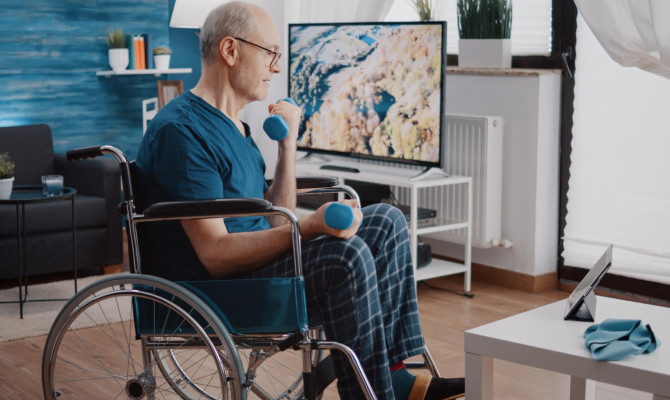Understanding Myopia: Causes and Treatment

- Myopia
- 17 Aug 2023
Overview
What is Myopia?
A refractive issue in the eye called Myopia, also called nearsightedness, impairs a person’s ability to view distant objects. People usually have clear eyesight when looking at close things, but when looking at foreign entities, they appear out of focus and hazy.1Overview| Researched based study from Nlm.nih.gov
This article aims to explain Myopia’s causes, consequences, and potential remedies. We’ll explore the underlying causes of nearsightedness, talk about how it affects people of different ages, and look at the numerous choices for treating and correcting these frequent refractive errors.

Symptoms

Symptoms of Myopia
Different people will experience other symptoms, which can appear gradually or suddenly. The following are some common signs and symptoms:
- Blurred vision
- Squinting
- Eye strain and fatigue
- Difficulty seeing clearly at night
- Need for frequent prescription changes
- Reduced visual acuity during sports or outdoor activities
Blurred vision
- The defining symptom is difficulty in seeing distant objects. The clarity of close things is generally better than distant ones, which may appear fuzzy or out of focus.
Squinting
- People frequently squint their eyes to focus on items more clearly. Squinting can assist in correcting the refractive defect by momentarily altering the shape of the eye’s lens.
Eye fatigue and strain
- Myopic individuals may experience eyestrain and weariness while focusing on adjacent things for extended periods, such as when reading or using a digital screen. This may result in pain, headaches, and the requirement for frequent breaks.
Difficulty seeing clearly at night
- Clear vision might be challenging to arrive at night or in low light. Individuals may see halos, glare, or more challenges when driving at night.
Regular prescription modifications are required.
- Myopia often worsens between childhood and adolescence, so people may realize that their contact lenses or eyeglass prescriptions must be updated frequently.
- This results from the eyeball’s continual modifications to its size and shape.
Reduced vision while playing sports or being outside
- Sports or outdoor activities could be more challenging for those who are myopic.
- Participating in sports or outdoor activities that call for clear distance vision, such as catching a ball or playing football, maybe more challenging for some people.1Symptoms| Researched based study from Nlm.nih.gov 2Symptoms| Researched based study from Nlm.nih.gov
Causes
Causes of Myopia
A combination of genetic and environmental variables affects how Myopia develops. While the precise causes are not entirely understood, research points to several things that could worsen the situation.
Genetic predisposition
- It frequently runs in families, which suggests a significant hereditary component. The likelihood of the ailment developing in a kid is increased if one or both parents have it.
- Several genes have been linked, although the precise genetic pathways are being investigated.
External factors
- Environmental variables significantly impact the development of this illness, especially during infancy and adolescence. A few of these factors are
Near work
- A higher risk of developing Myopia has been linked to extended close-up activities like reading, writing, using digital gadgets, or concentrating on nearby things.
- The increased demand for close vision may be a factor in the elongation and refractive changes of the eye.
Lack of time spent outdoors
- Limited outdoor time, especially for the young, has been associated with a higher incidence. The precise causes are unclear, although elements like exposure to natural light and taking part in distant vision activities outdoors may have a protective effect.
Visual environment
- A higher risk has been linked to specific visual settings, such as living in an urban region with little access to green space. Urbanization-related factors, such as more people working close to home and fewer outside activities, may be responsible for this link.
Refractive changes as the eye grows
- It frequently develops during childhood and adolescence, when the eyes are still developing and changing.
- Myopia causes the cornea to be overly bent or the eyeball to be longer than usual, which causes light to focus in front of the retina rather than directly on it. These anatomical modifications cause nearsightedness.1Causes| Researched based study from Nlm.nih.gov ,2Causes| Researched based study from Nlm.nih.gov
Diagnosis
How is Myopia diagnosed?
Usually, the initial step in diagnosing is an eye exam. A thorough eye examination will be performed by an optometrist or ophthalmologist and may include the following elements:
Test of visual acuity
- Using an eye chart, this determines how well you can see at different distances. It helps assess your visual acuity level and whether you need help seeing far-off objects.
Test for refraction
- The doctor uses a phoropter or trial frame and a variety of lenses during this examination to figure out the exact prescription required to correct your vision. This helps in evaluating the severity of Myopia.
Examining the retina
- Using a specialized tool called an ophthalmoscope, the eye care specialist may also check the retina on the back of your eye. This helps identify any underlying eye disorders or illnesses that might be causing or exacerbating it.
History and symptoms
- Your medical history and any symptoms, such as impaired distance vision, squinting, or headaches associated with close work, will be discussed with the eye care specialist.
Objective assessments
- The use of objective measurements may occasionally evaluate the focusing capacity of the eye. These can be used to pinpoint Myopia’s exact degree.3Diagnosis| Researched based study from Nlm.nih.gov
Treatment
Myopia treatment
Prescription eyeglasses
- It is frequently suggested to use eyelashes with negative power lenses to fix it. By helping to concentrate light onto the retina, these glasses enable people to see farther.
Wearing contact lenses
- They are an alternative and function by changing the path of light entering the eye, much like spectacles. Your eye care provider can help you choose the best type of contact lenses from various options, including rigid gas-permeable, and soft lenses.
Orthokeratology (Ortho-K)
- It is the practice of wearing specialized rigid gas-permeable contact lenses all night.
- These lenses give the cornea a temporary makeover, improving daytime vision without using glasses or contact lenses.
- It can be an alternative for those who prefer to wear glasses or contact lenses throughout the day and is typically advised for mild to moderate Myopia.
Refractive surgery
- In moderate to severe situations, this is a long-term remedy. The cornea is reshaped surgically to remedy vision problems using techniques like LASIK (laser-assisted in situ keratomileusis) and PRK (photorefractive keratectomy).
- A trained ophthalmologist should be consulted about these procedures as they can determine your eligibility and offer advice.
Changes in lifestyle
- Particularly in adolescents and teenagers, several lifestyle modifications can delay the progression. A few examples are spending more time outside, limiting screen time, keeping a correct reading distance, and using excellent posture when working up close.4Treatment| Researched based study from Nhs.uk ,5Treatment| Researched based study from Wales.nhs.uk
Highest Myopia
What is the highest Myopia?
- The refractive error, measured in diopters (D), determines which degree is higher. They show how much light is bent when it enters the eye.
- Although there isn’t a set limit for Myopia, severe cases are known as high or pathological Myopia. Having a refractive error of -6.00 diopters or more is the standard definition.
- When this occurs, the eyeball is noticeably enlarged, and the affected individuals may experience more severe impairment. It raises the risk of several eye disorders, including cataracts, glaucoma, macular degeneration, and retinal detachment.
Prognosis
What is the prognosis?
Myopia has no known treatment as of yet. There are several therapy alternatives to manage it and offer a more precise vision while halting its advancement.
The available treatments can successfully restore vision clarity, but they do not reverse the underlying structural alterations in the eye. Therefore, even with treatment, it might still advance. To track the progress of the treatment and make any adjustments, routine eye exams are crucial.
Any feedback on this article?
 This Articles content was accurate
This Articles content was accurate Very Informative Article
Very Informative Article I have a question or a comment
I have a question or a comment
 This article contains inaccurate content
This article contains inaccurate content This article was not helpful
This article was not helpful I have a question or a comment
I have a question or a comment
We appreciate your helpful feedback!
Checkout our social pages
References
-
National Library of Medicine
Myopia | Overview | Causes | Symptoms
-
National Library of Medicine
Myopia | Symptoms | Causes
-
National Library of Medicine
How to detect myopia in the eye clinic | Diagnosis
-
National Health Service
Short-sightedness (myopia) | Treatment
-
NHS Wales
Short-sightedness | Treatment






































